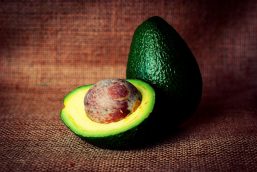
What is in your cup of coffee?
Black and bitter? White and sweet? Iced or rum-spiced? Americano or latte? In its many shapes and forms, coffee is undoubtedly one of the most popular drinks all over the world. Most people consume it to decrease mental or physical fatigue while increasing productivity. But many of them are perhaps unaware of the rich story hidden in each cup of coffee. So let us have a look at the origins of this drink, its modern production process, and last but not least - the scientific validation of its effects.
What is in your cup of coffee?
There’s a high chance you have had a cup of coffee already. If so, you are not the only one. Statisticians got it – every day up to 40% of the entire population drinks at least a cup. In the US and the countries of Northern Europe, an average adult drinks between 3 to 5 cups of this hot beverage! But do you actually know what is in your cup of coffee that makes it so darn irresistible? Have you heard the legends regarding the discovery of coffee? Are you aware of the secrets behind the amazing aroma of coffee beans? Now, if you would like to get an answer, keep reading. We have got it covered!
The legendary beverage
Coffee had traveled all over the planet before it became the most popular morning drink of human civilization. Nobody really knows where this journey actually began. Perhaps the first coffee trees were discovered about 12 centuries ago in Ethiopia but we can’t really be sure about that. Archeologists suppose that in these times coffee had been prepared from raw fruits rather than roasted seeds. However, most of their knowledge is based on legends that are still alive in the southern hemisphere. So, which one is the most interesting?
The first and most popular tale tells the story of a young shepherd, Kaldi. One evening, his goats had suddenly disappeared, so he went to look for them. After many adventures, he found the animals in a far-away pasture. Surprisingly, goats seemed to be very excited and jumped all over the place. Kaldi discovered that the reason for their unusual behavior had something to do with their food – it turned out that all day long they have been eating some little red fruits from the nearby trees. When the shepherd tried the fruits himself, suddenly he felt a boost of energy. Thereafter, he collected them and brought them back to his village. The news about this new, miraculous tree quickly spread around, and so the popularity of coffee began to rise. All these events supposedly took place in the ancient land of Kaffa, which now is a region of Ethiopia.
Another legend also features a herd of curious goats. Once again, the animals went missing. But this time, they belonged to the monks from Chehodet monastery in Yemen. Monks had found clearly excited and aroused animals but noticed that they had been eating red fruits that were growing on an unknown tree. So, just like in the previous story, they collected some of these fruits and took them back to the monastery. There, they cooked new ingredients and tested the beverage on themselves. It turned out that the drink had an exceptionally stimulating effect on these people. From that day on, apparently, they felt full of energy, and were able to pray all night long. When the news spread around, people started to call the drink ‘quahwa’ – which in Arabic actually means ‘wine’. This is particularly interesting, because all alcohol beverages were strictly forbidden in Muslim countries. Could then coffee be treated as a more acceptable replacement for booze? One way or another, both legends clearly illustrate the role goats have played in the discovery of coffee. Maybe there is a grain of truth in that idea, after all.
One more thing that we can learn from these stories is that the ancient version of coffee couldn’t smell or taste like the coffee we know today – it was made directly from the unroasted seeds or even the entire fruits. Back then, this drink was used more as a medicine or stimulant – not a way to make morning hours more pleasant. What is more, coffee fruits and seeds were often chopped into tiny pieces, combined with fat and used as snacks for warriors and hunters. Alright then, but one could ask – what sort of magic transforms the raw fruits into delicious invigorating drinks? In the next paragraphs we will investigate the modern version of the coffee production process. In particular, we will discuss how coffee fruits are harvested and prepared for consumption.
From a tree to the roastery
Coffee trees belong to the genus of flowering plants in the Rubiaceae family. Their seeds, called coffee beans, are used to produce the drink known as coffee. However, they must undergo a long way before this beverage can be brewed. What does this process look like?
The flowers of coffee trees have a white color and an intense, sweet smell. After pollination, they dry out and in their place appear coffee cherries – the fruits of coffee plants. Cherries need up to 11 months to reach maturity. At first, they are green and small, then reddish and pea-sized. Finally, they become maroon and bean-sized. It is a sign that the seeds, hidden inside the fruits, are ready for harvest. This process can be either performed by hand – as it is done on high quality coffee plantations – or mechanically. Next, harvested fruits are carefully segregated and prepared for further processing. This time, the goal is to extract untouched seeds.
Coffee seeds can be extracted from coffee cherries in two ways. The first method, called ‘dry’ or ‘natural’, involves the use of sun rays. The cherries are spread evenly on the flat surface and dried for several days. Next, the seeds are taken away from the dried fruits with the help of machines. This method is particularly popular in countries where there is a water shortage. In regions that do not suffer from droughts, the second extraction method is more often employed. Long story short, fruits are removed mechanically in basins filled with water. Then, the seeds are dried with the help of sunlight. Lastly, they are packed into jute sacks and shipped to the roasteries. Roasting is the most important step of the coffee journey from the tree to the cup. And this is where the magic happens.
Green versus roasted
In some shops, mostly organic groceries or high-end supermarkets, you might have seen green coffee. If you brew it, the end effect will be quite different than what you might expect. This drink won’t be black and aromatic, but rather white and acidic. So, how to transmute raw coffee seeds into coffee beans? This secret is known only to a specialist called a “master roaster”. And no, it is not a stand up comedian “roasting” people. There is actually one known way to turn coffee seeds into coffee beans. That’s right, you have to burn them all! The process of roasting – although full of tiny yet extremely important details – boils down to heating up coffee seeds in special ovens. In this way, the raw seeds undergo several physical and chemical transformations. Careful selection of temperature range and roasting time allows the master roaster to extract all the valuable flavors while simultaneously preventing the beans from getting too bitter. Yep, it is a kind of magic.
The alchemy of roasting
As with all sorts of sorcery, the details of the process escape the knowledge of the common folk. However, some facts regarding roasting are well-known, even to a lay man. Let’s have a look at transformations induced to coffee seeds by high temperature. First, the visible change: seeds switch their color from green, through yellow and brown, to black. This is accompanied by growth: during roasting each seed doubles in size, while simultaneously losing up to half of its weight. The smell gets a little different as well as raw coffee seeds don’t really have a rich flavor. Roasted beans, however, can develop even up to 800 different aromas. And of course, roasting has a significant effect on taste. At the beginning of the process, coffee sweetness and acidity rise up, and upon prolonged roasting go down again, until they reach a perfect balance. Oh, and a fun fact. What does coffee and corn have in common? Both pop up during roasting!
So, now we know the multifaceted story hidden in each and every cup of coffee we drink. Only one question remains. Why do our brains like coffee so much? Since scientists are usually coffee-addicts (or at least they are stereotypically portrayed like that), they have discovered some answers to this question already. Let’s dive in and take a look at the brain on coffee.
Sharp and satisfied
Have you ever wondered why you are drinking coffee? Perhaps for two main reasons. First, because it makes your sleepy brain get up with the speed of light and second – it just feels so darn good. So now, we will investigate these phenomena from the neuroscientific point of view. Although it can be pretty complex, it is also quite fascinating. First, why does coffee prevent us from feeling sleepy? Maybe it has a special ingredient that makes us feel alert. Any guesses what might that be?
This story begins with a neurotransmitter called adenosine. Its molecules accumulate during wakefulness and are metabolized during sleep. When they connect to specific receptors, target neurons slow their activity down. In other words – when adenosine is around, neurons go into a turtle mode. This is when you start to feel like a zombie, unable to complete even the simplest task without falling into the black whole of procrastination.
Now, let us tell you the secret of coffee. Its main active component, caffeine, is structurally nearly identical to adenosine. Thus, it can easily bind with its receptors. The cool part is, caffeine affects them in exactly the opposite way. This means that when its molecules connect to these receptors, the activity of target neurons actually becomes higher! On top of that, their receptors are busy mingling with caffeine, and so adenosine molecules cannot get through and slow them down. Taken together, these effects make your neurons as excited as teenage girls are at Justin Bieber’s concert, yet likely more productive.
Ok, now we know why coffee makes us alert. But what about the supposed pleasure? The answer is – dopamine. This neurotransmitter, mainly known for its involvement in the “reward system” of the brain, is also affected by caffeine. Scientists have demonstrated that when caffeine binds to adenosine receptors in the brain, the activity of neighboring dopaminergic receptors increases. As a result, the upregulation of dopaminergic signaling leads to a significant improvement of mood. And the more dopamine flows through your brain, the easier it becomes to feel motivated. Therefore, this neurotransmitter contributes to our productivity. What is also noteworthy, dopamine also helps us to really savor the effects of our work. Perhaps for these reasons coffee is the favorite drink of workaholics?
or anxious and frustrated?
Last but not least, let’s mention a word of caution. As all things on this planet, coffee has a dark side too. Perhaps you’ve experienced this already – from the third cup onwards, sharpness and pleasure quickly transform into distraction and frustration. Instead of getting things done, we fall into the downward spiral of starting multiple assignments without finishing any of them. Luckily, the scientists have estimated the border between helpful and harmful coffee consumption. It oscillates around 100 to 300 mg of caffeine, depending on your body type and previous coffee exposure. In normal language, this is between 1 to 3 cups of coffee a day. To ensure positive effects, switch to decaf around 2 pm – otherwise caffeine might interfere with your sleep.
That’s it! Now you know what is in your cup of coffee. Feel free to enjoy your next cup mindfully, maybe even giving a bit of silent gratitude towards goats who apparently discovered this magical drink… Or did they?
natalia
M.A. in Cognitive Sciences at the Osnabrück University. Worked in laboratories located in Poland, Australia and Germany. Her research subjects include the neurophysiology of the brain, eye tracking tests, EEG and VR. She is passionate about yoga and promotes a healthy lifestyle but also enjoys reading fantasy books. She definitely likes cats, dogs and all other lovely pets.
References
Darbonne C, Girard S. (2005). Kawy świata. Wydawnictwo Twój Styl
Grosso G. et al. Coffee, tea, caffeine and risk of depression: A systematic review and dose-response meta-analysis of observational studies. Mol Nutr Food Res. 2016
Hoffmann J. (2018). The world atlas of coffee. Octopus Publishing Ltd.
Rao S. (2014). The coffee roaster's companion. Independent Publisher
Volkow N. D. et al. “Caffeine increases striatal dopamine D2/D3 receptor availability in the human brain.” Translational psychiatry, 2015




Logged as natalia. Log out ?
Add a comment